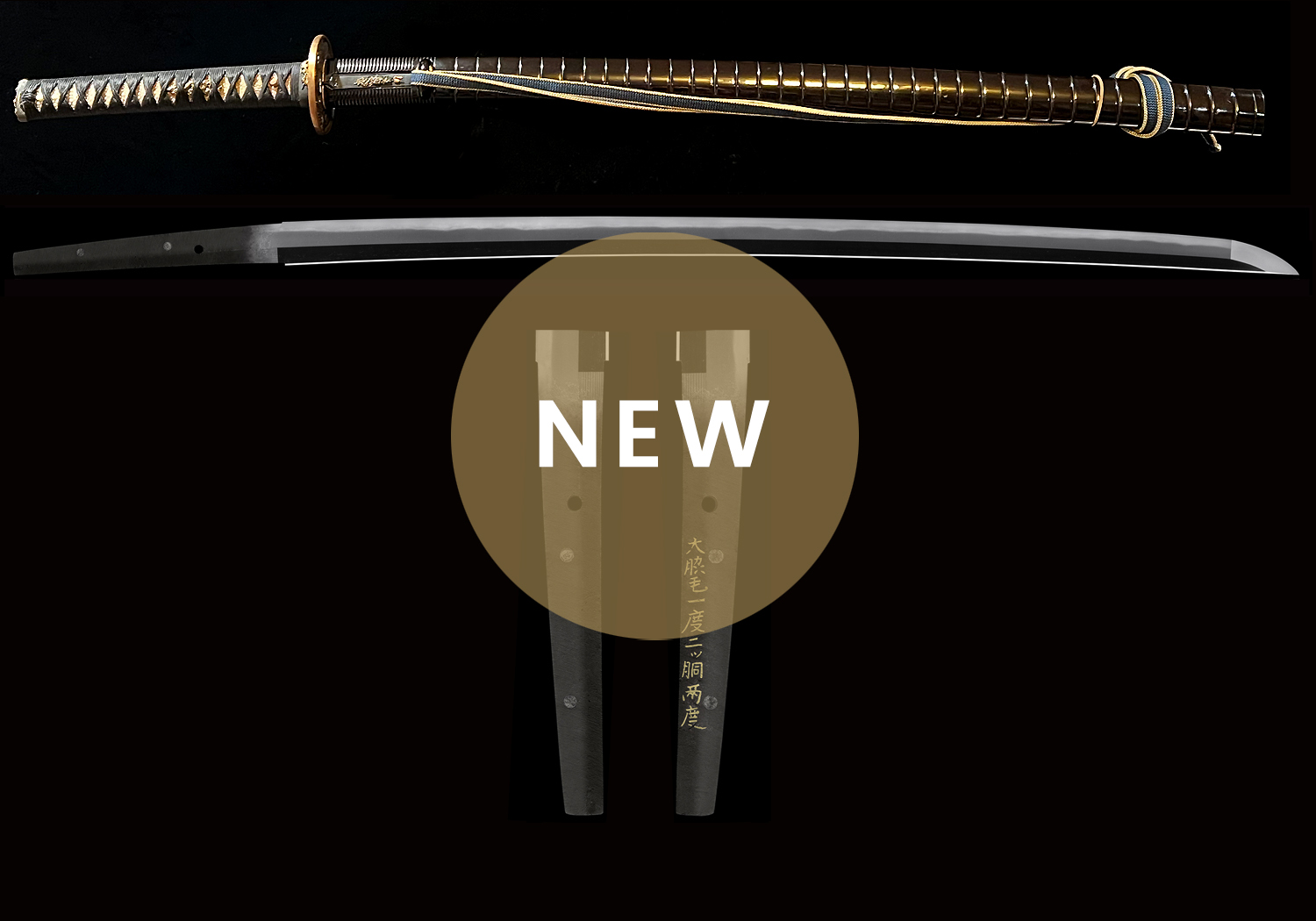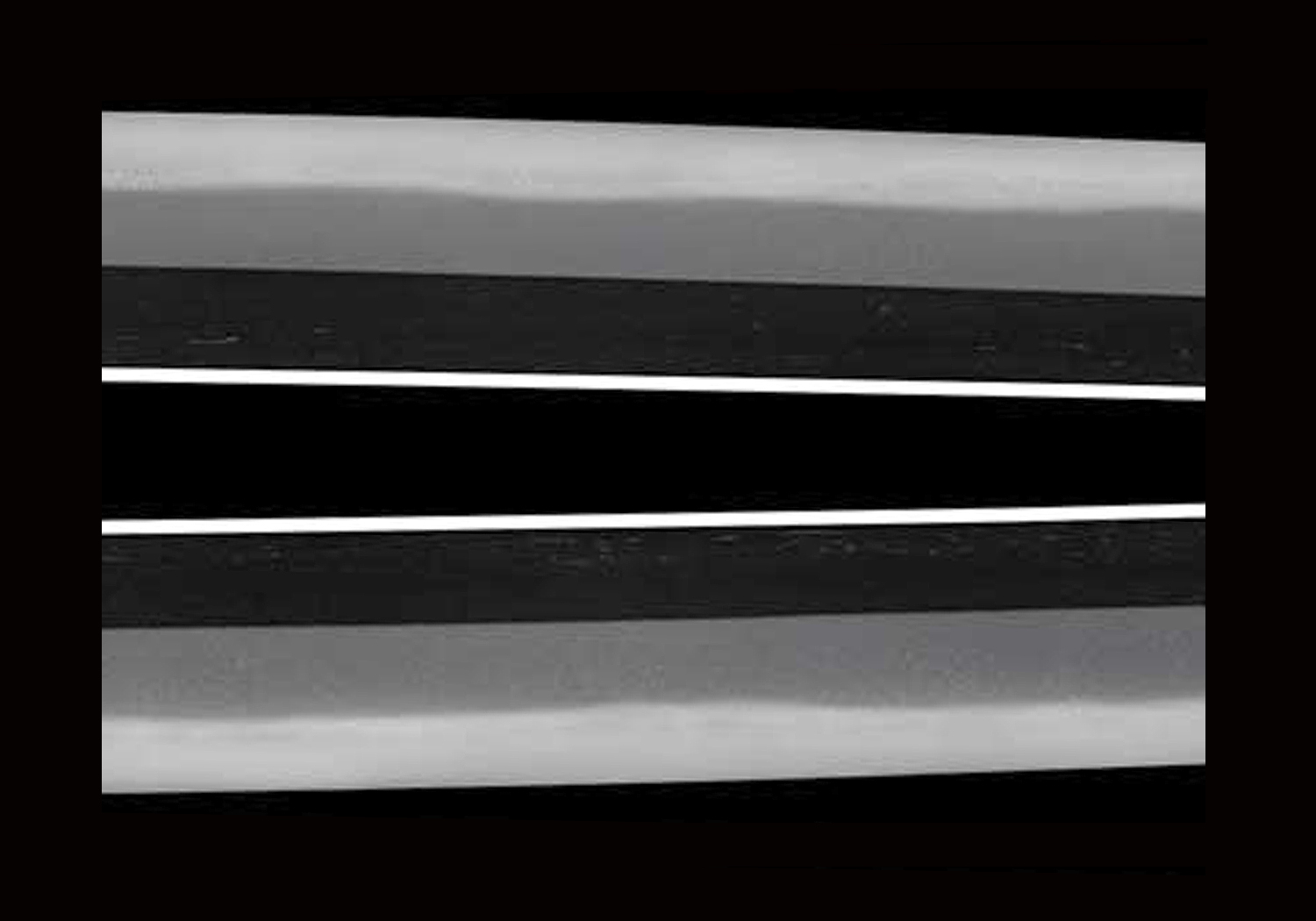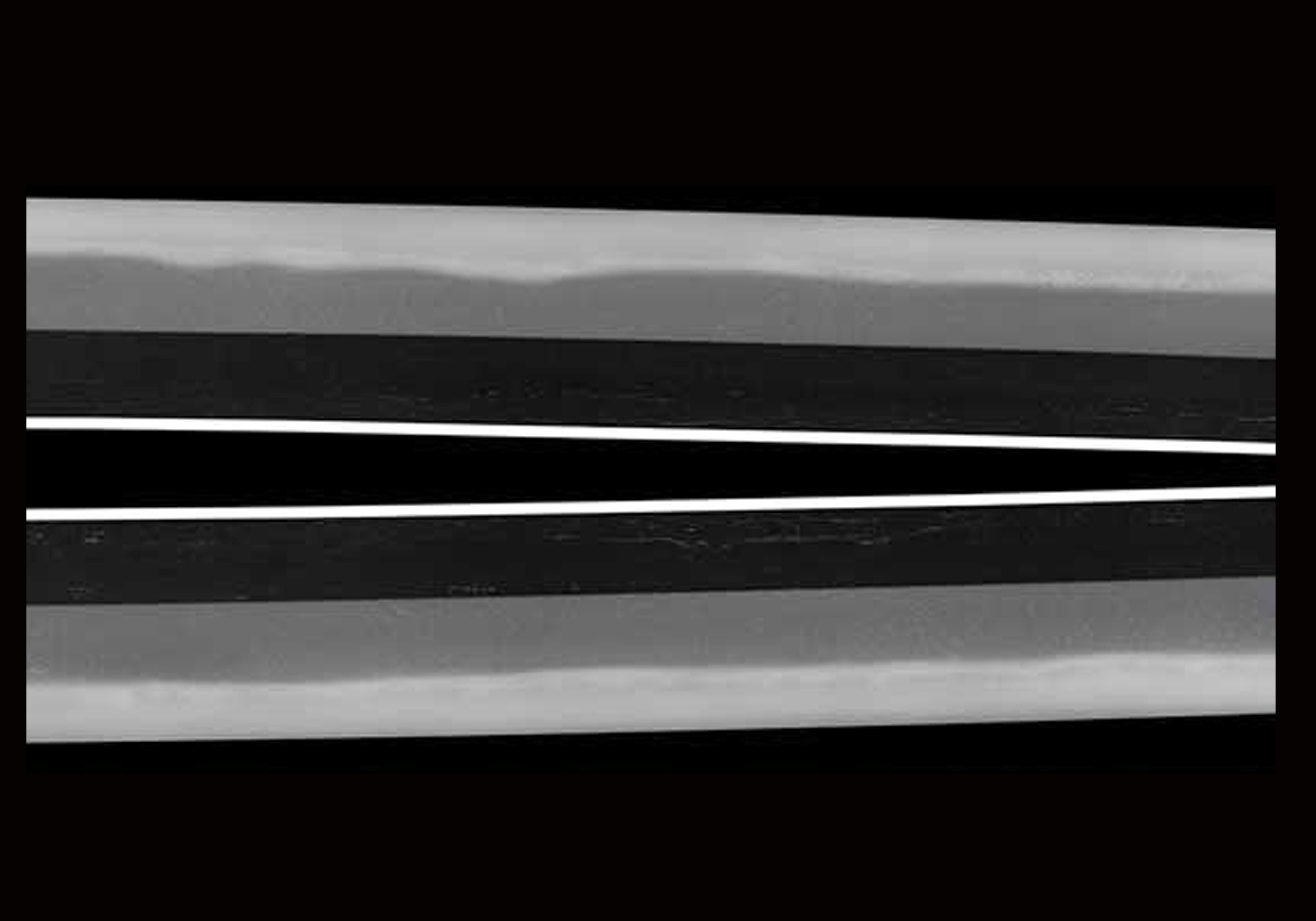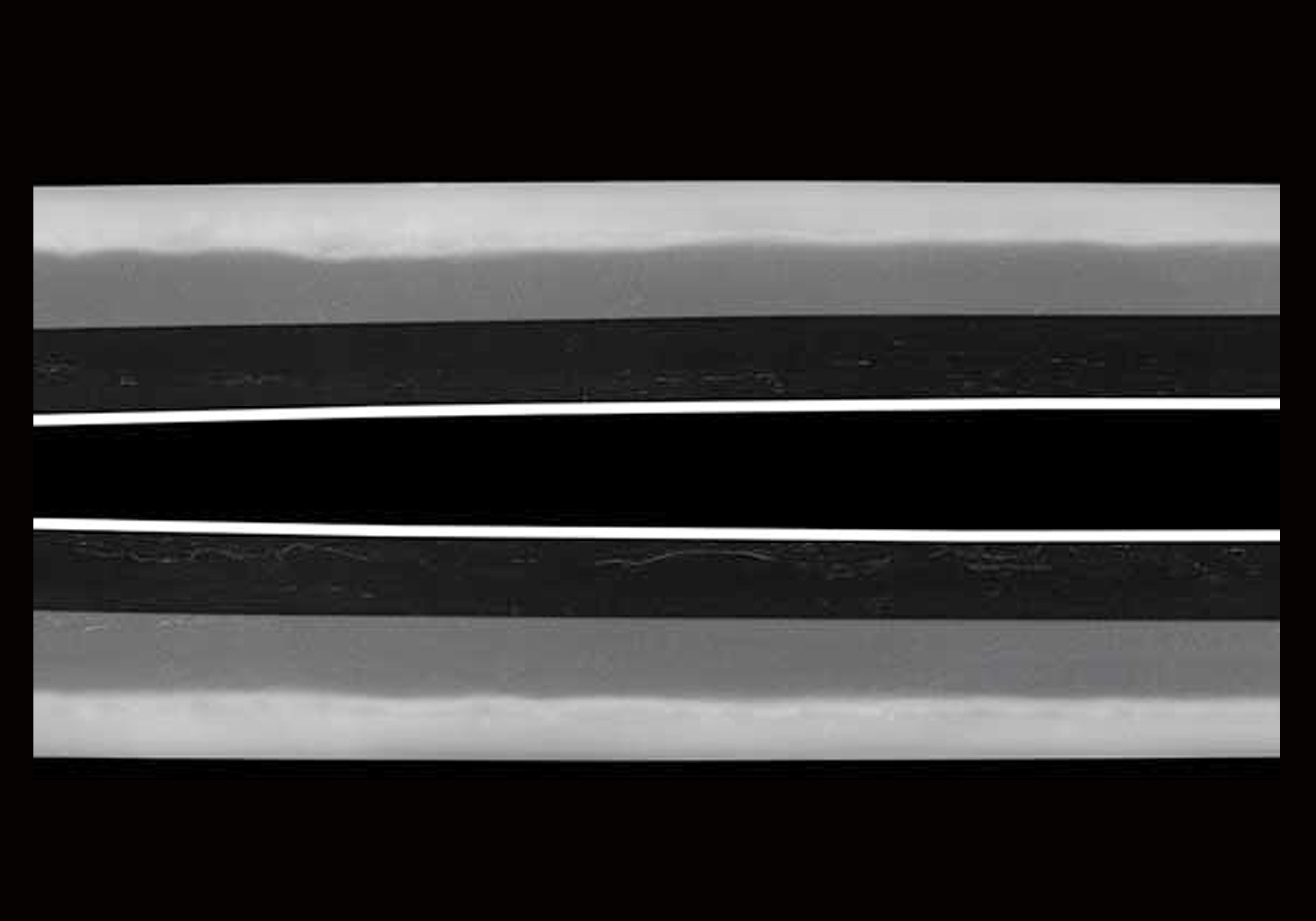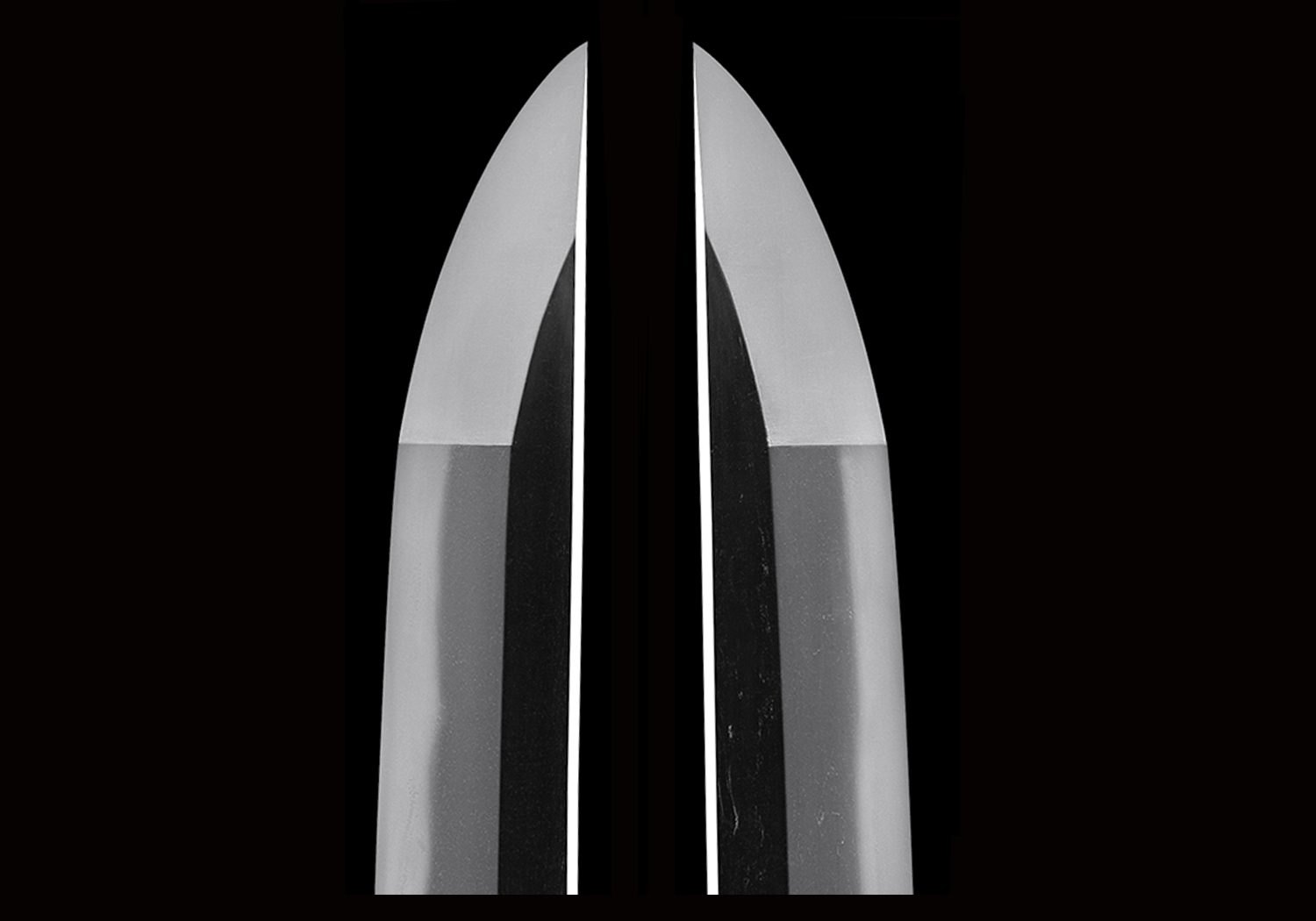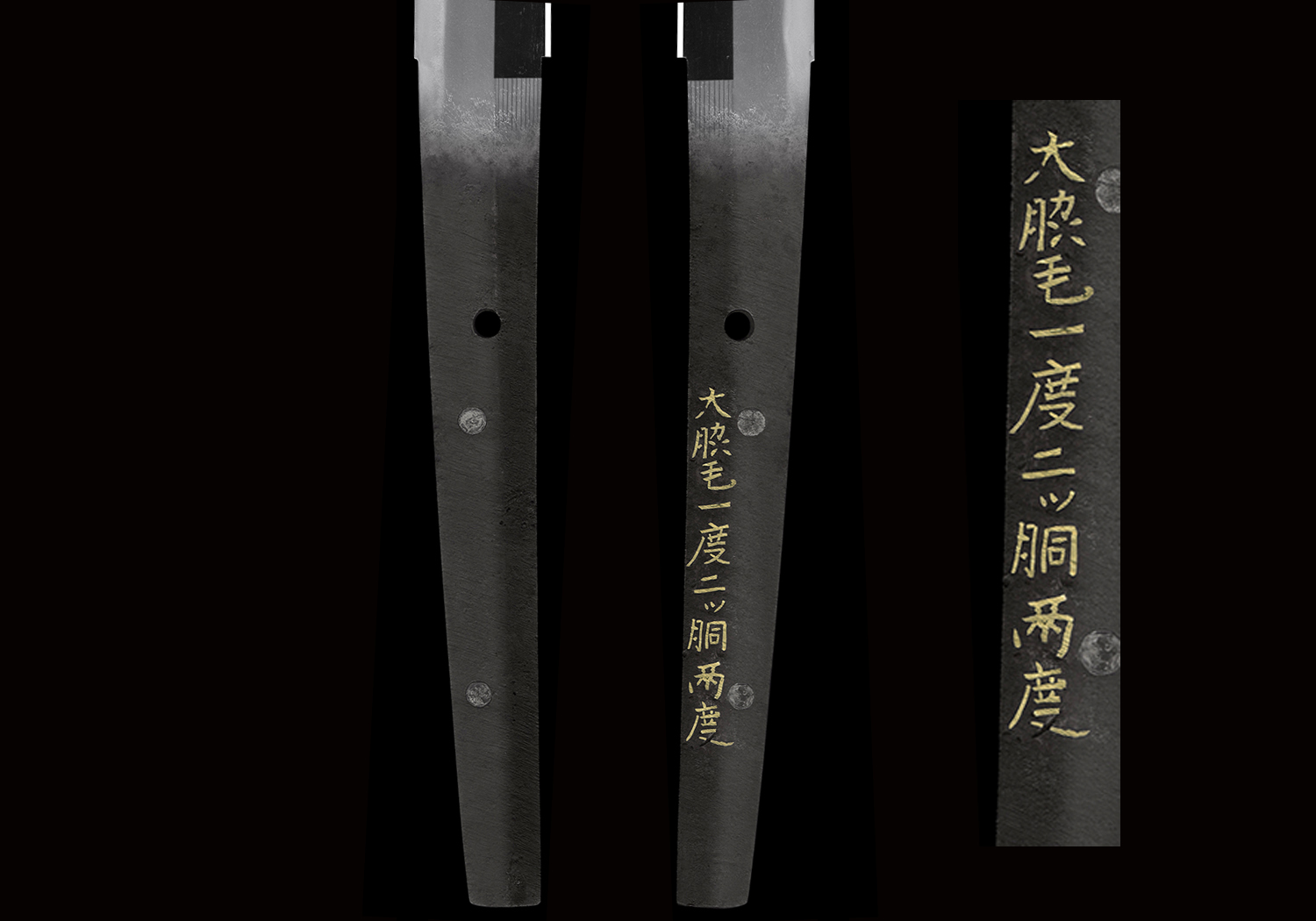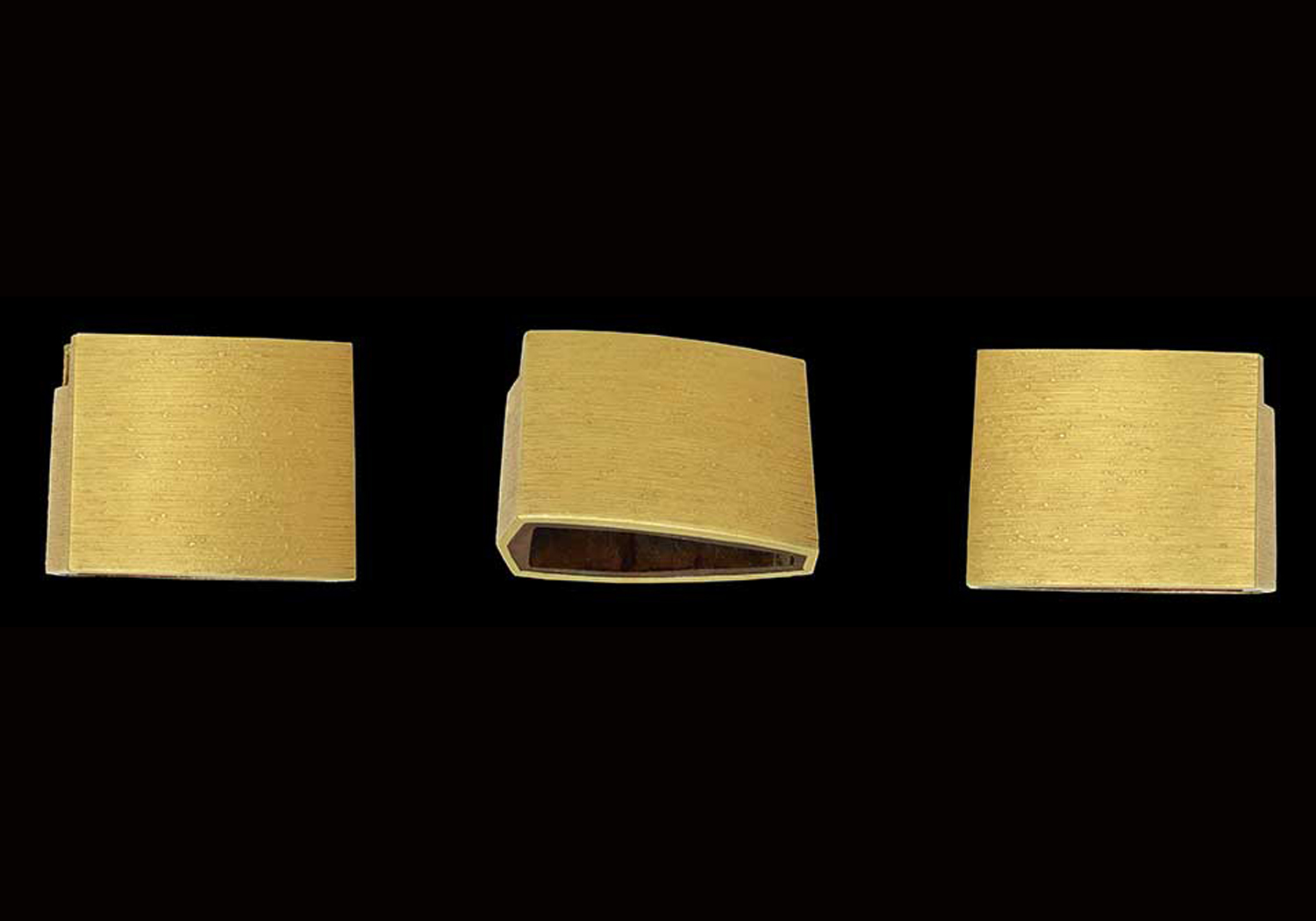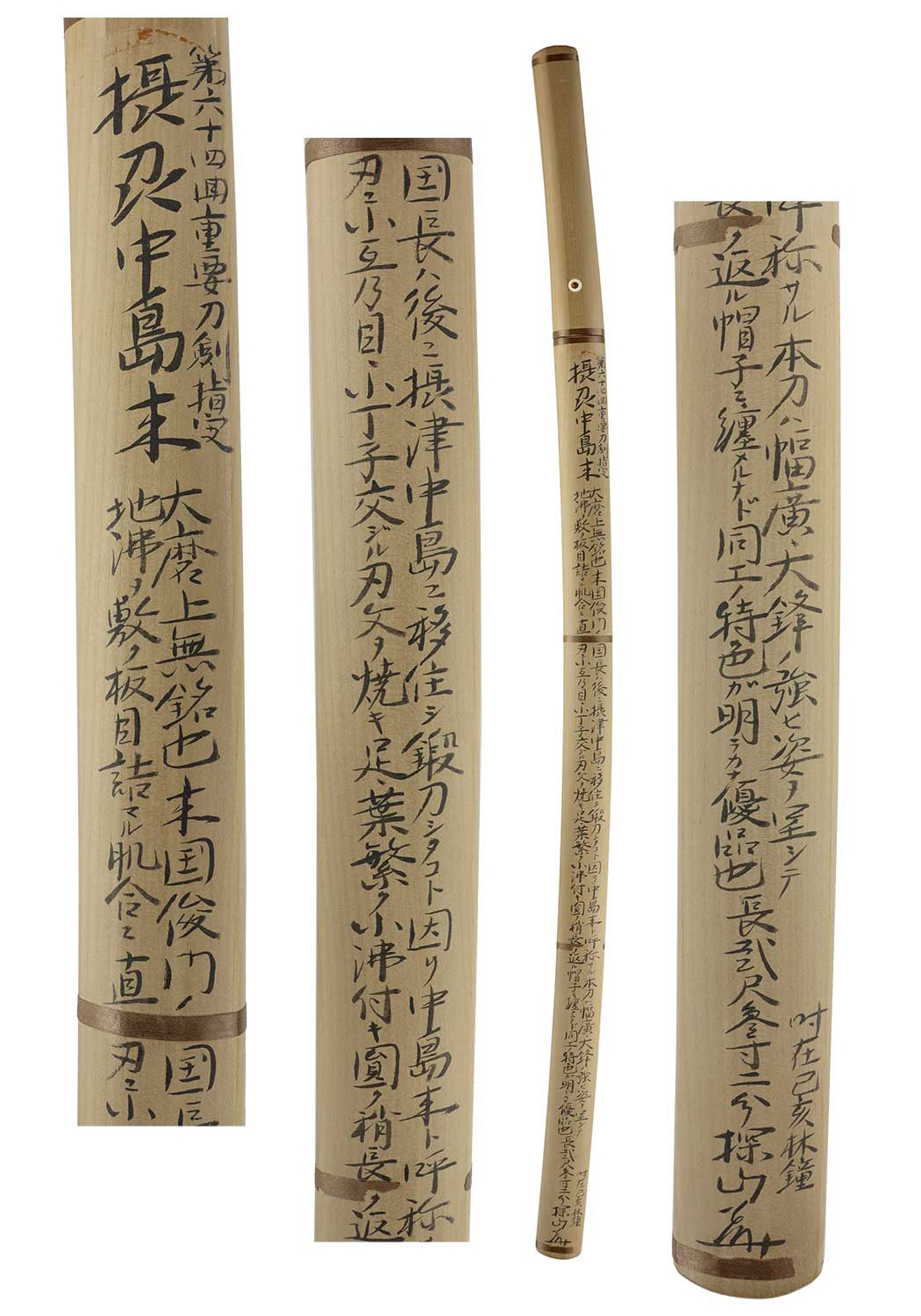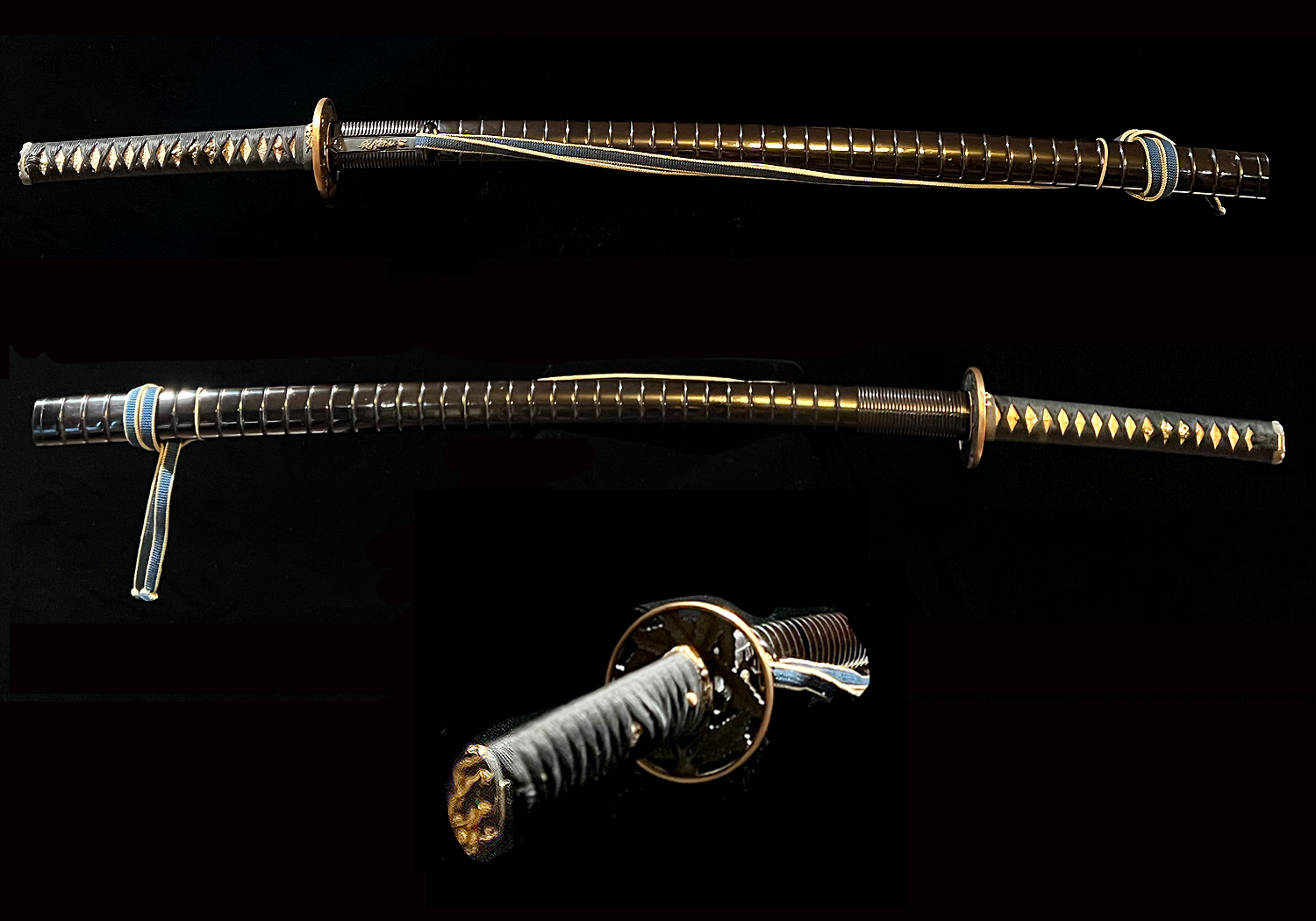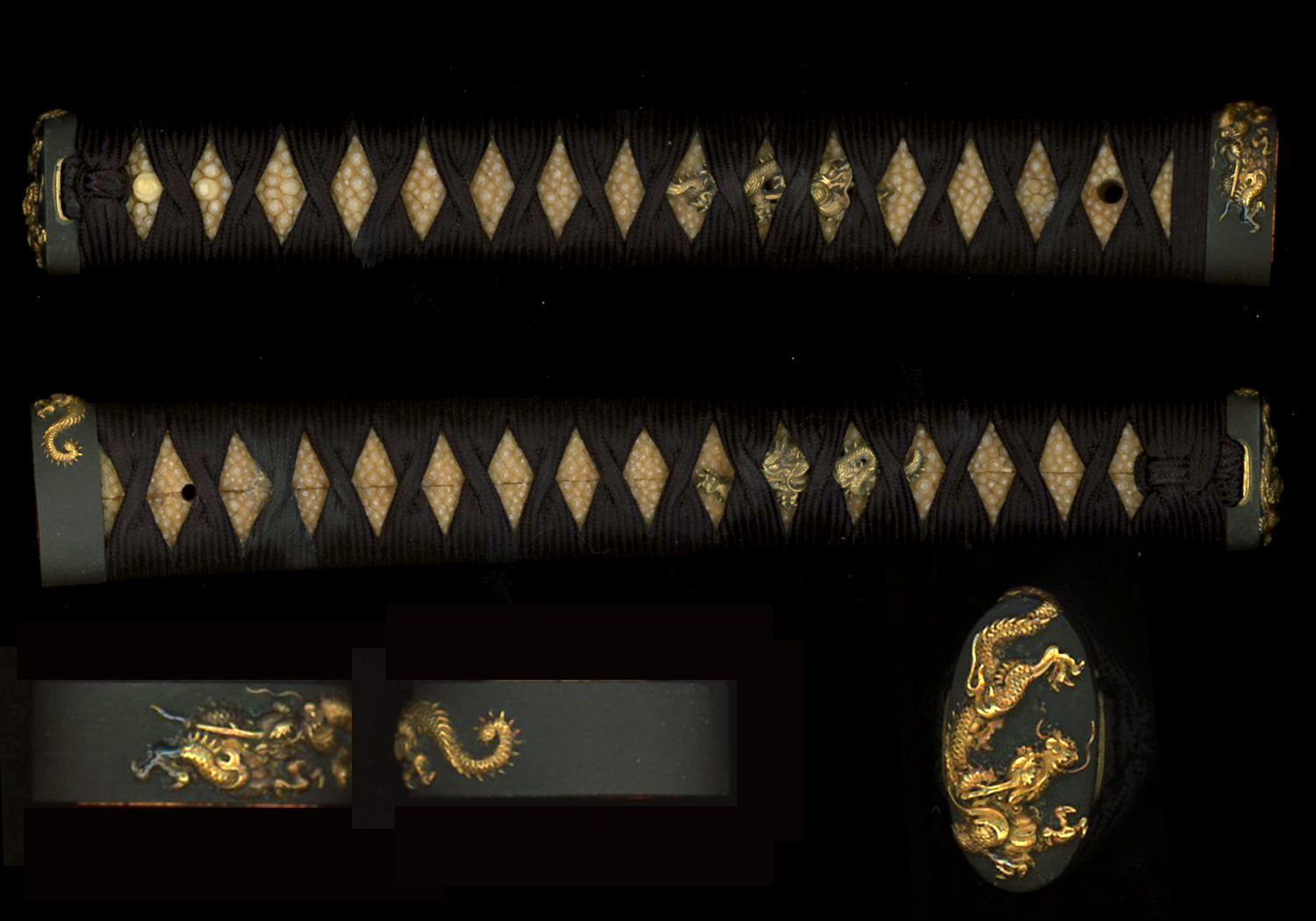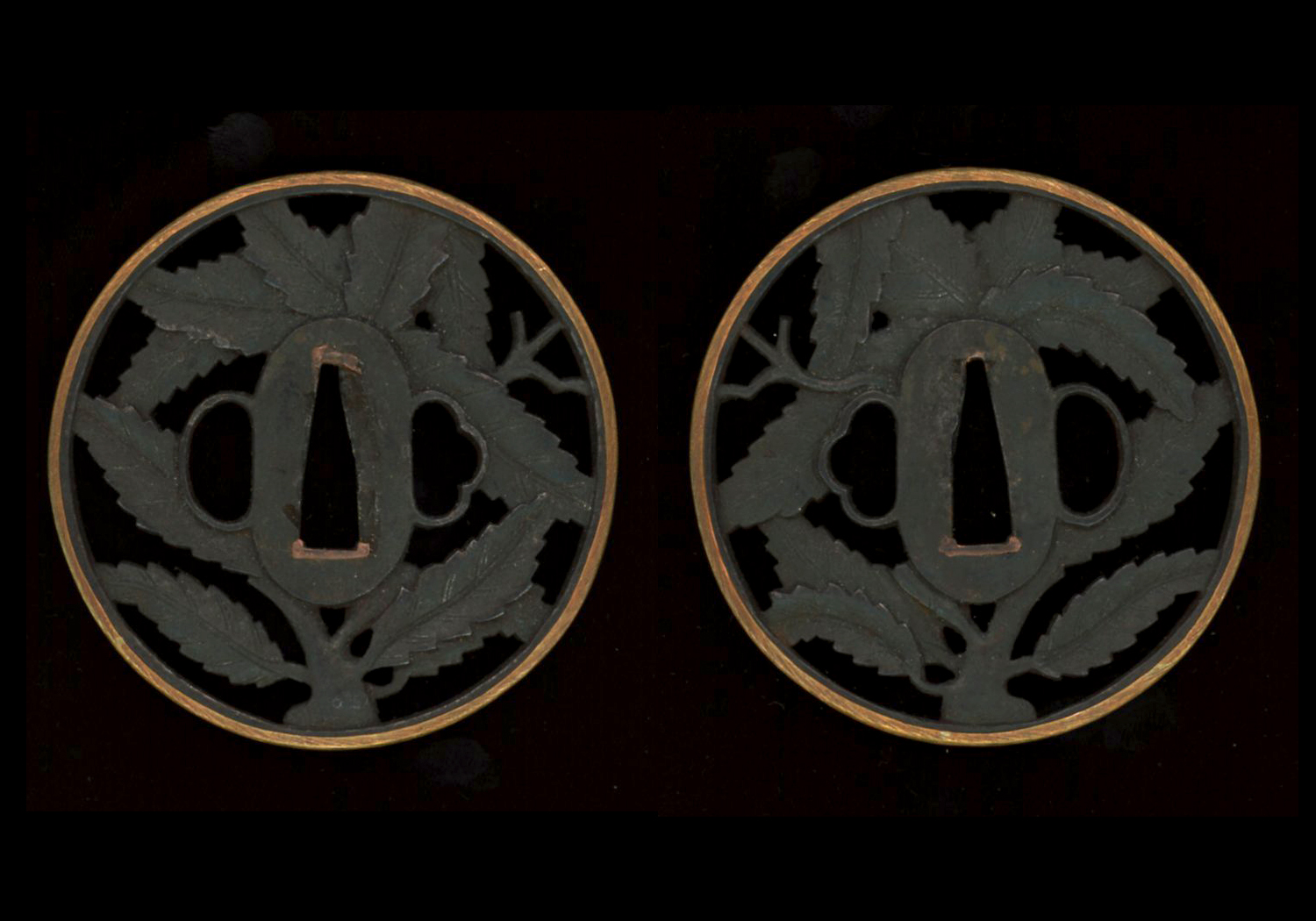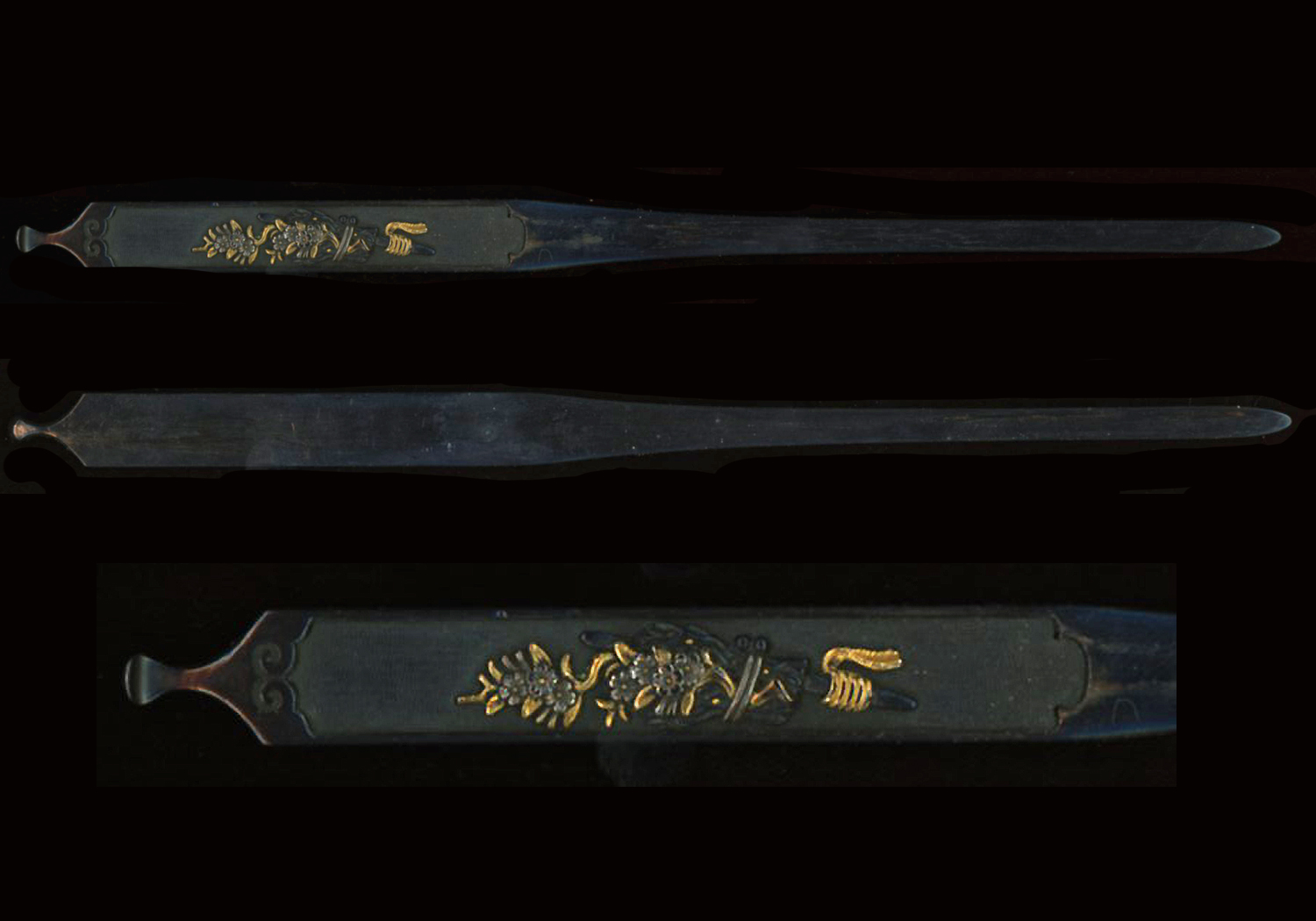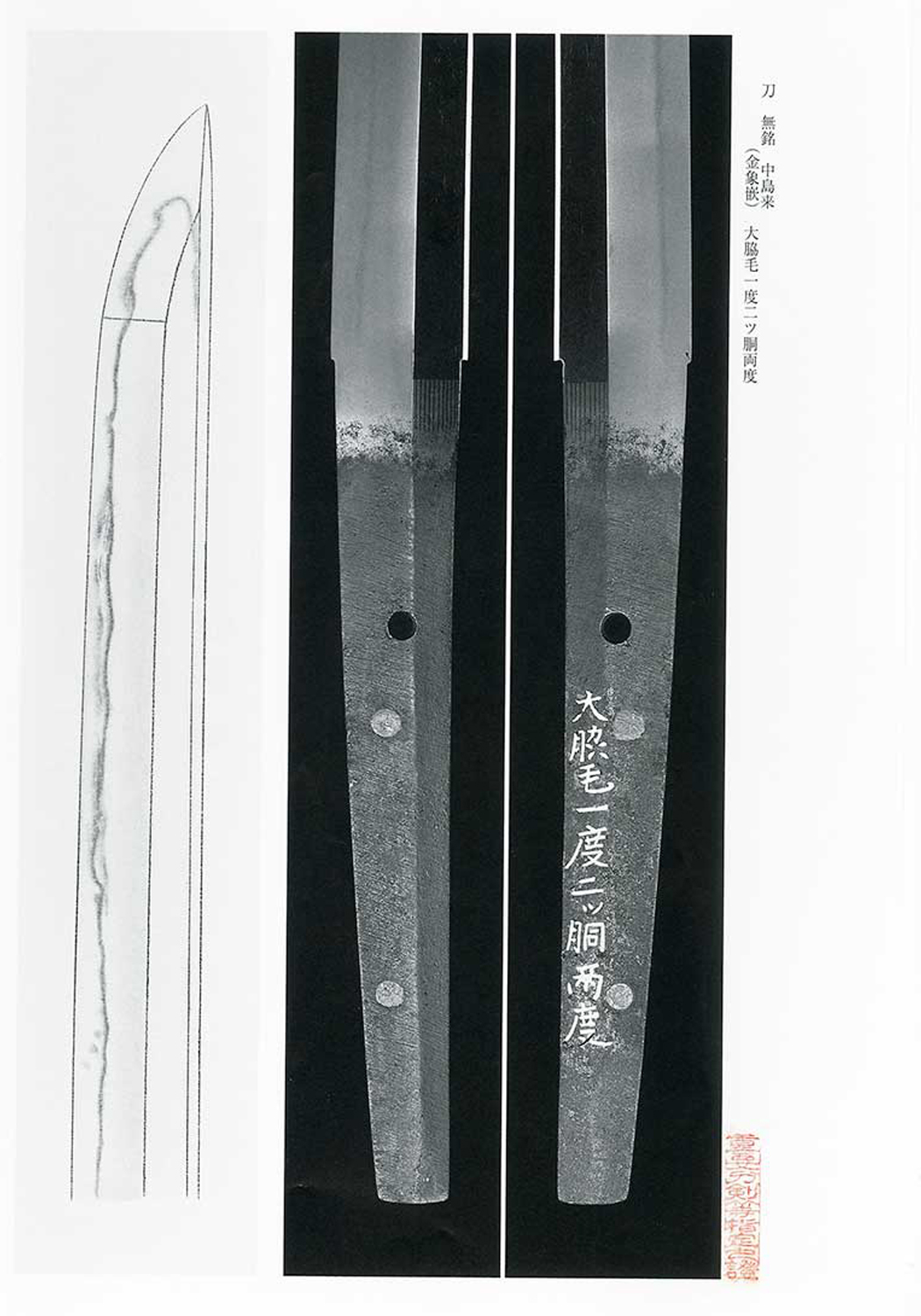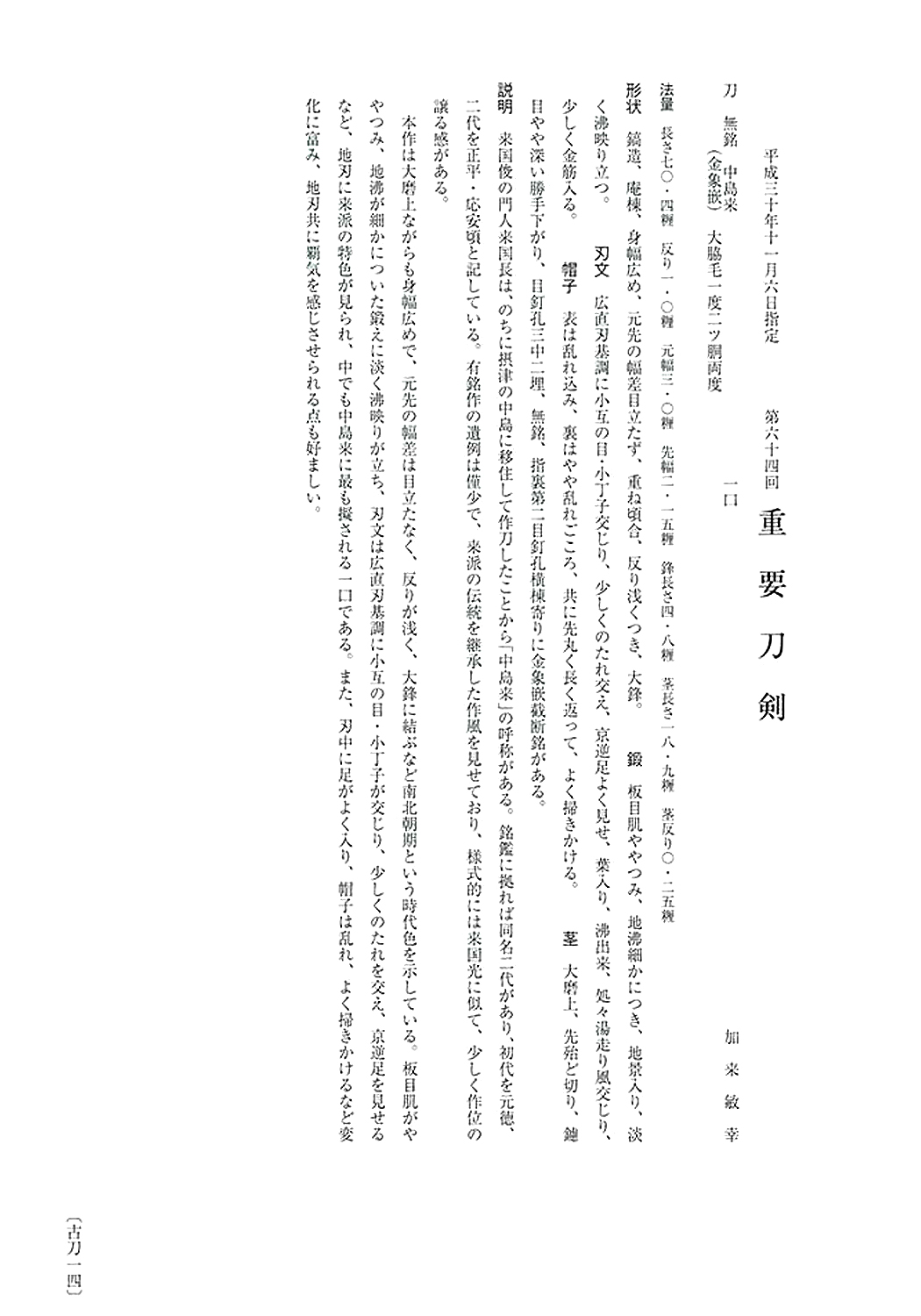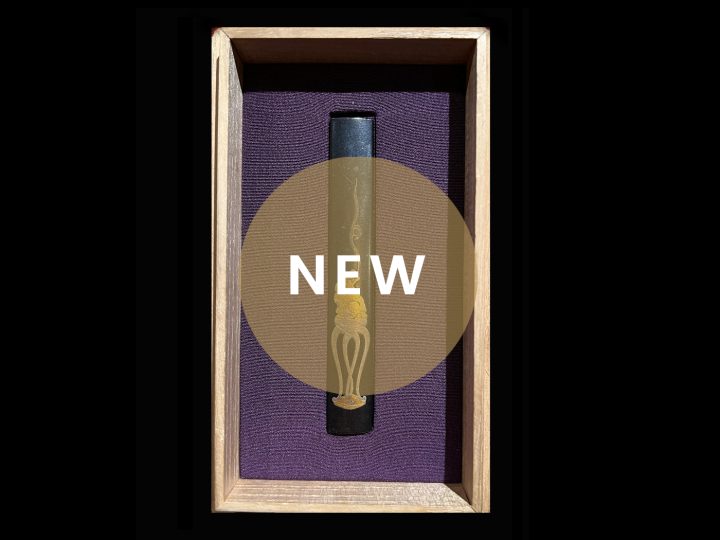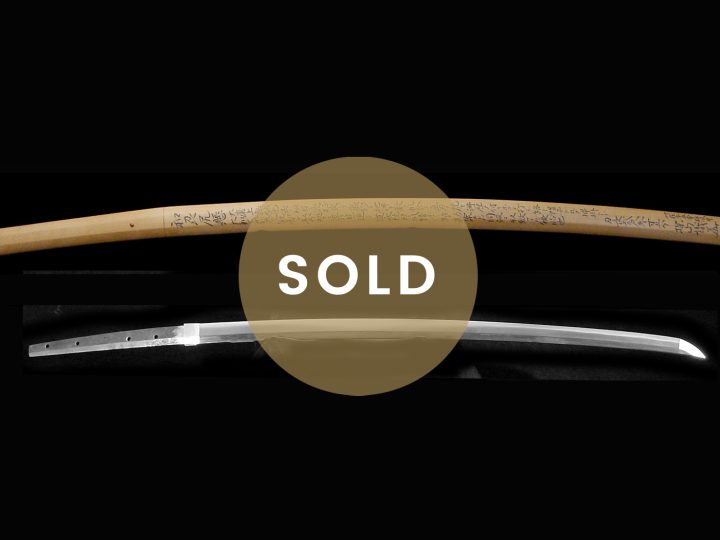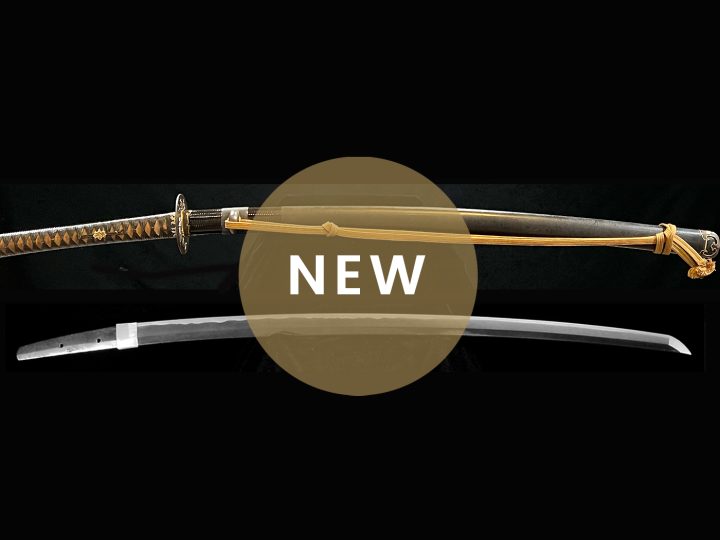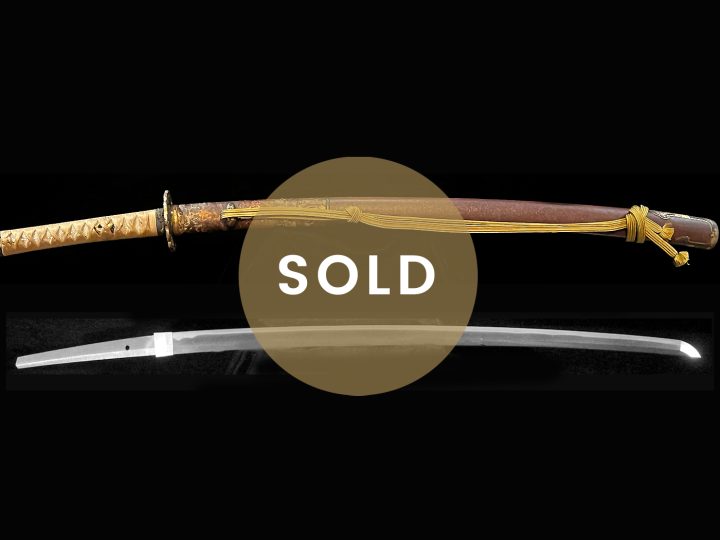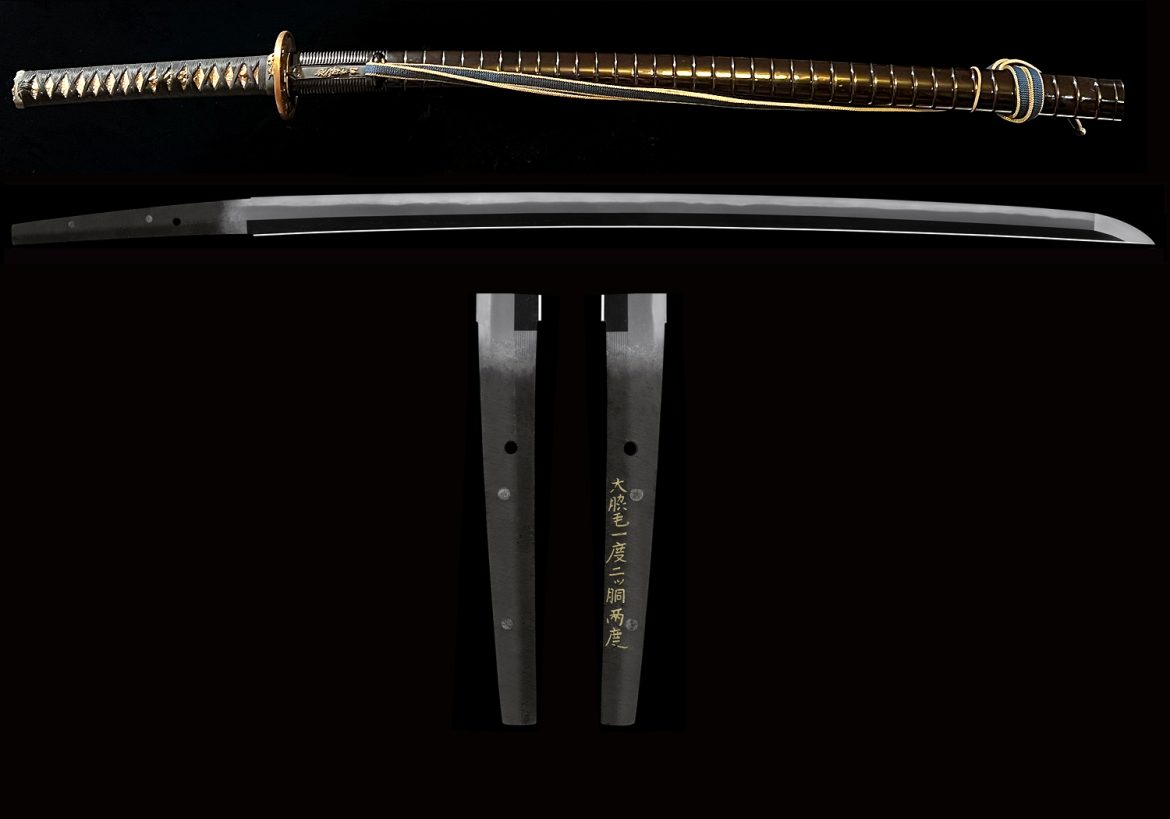
Rai Kunitoshi (来国俊) is considered to have been one of the premiere sword smiths of all time and he trained many fine students a few of which were Rai Kunimitsu (来国光), Rai Kunitsugu (来国次), and Rai Kuninaga (来国長). Written accounts and existing swords support the fact that Rai Kunitoshi had many fine students, and during his lifetime in the capital of Kyoto, he was famous. It is believed that Rai Kunitoshi’s top students made works under Rai Kunitoshi’s name (daisaku/daimei) including Kunitsugu (来国次) and his younger brother Kuninaga (来国長).
The blade offered here is by the founder of the Nakajima Rai School, Rai Kuninaga (来国長) who was one of the top students of Rai Kunitoshi (来国俊). Perhaps the best place to start would be with some of the major characteristics of the blades of Rai Kuninaga’s teacher, Rai Kunitoshi and the traditional Rai school in general. The Rai school, together with the Awtaguchi school, is representative of Yamashiro blades and was active from the latter mid-Kamakura period through the Nanbokuchô period. Traditionally, Rai Kuniyuki (来国行) is considered to have been the founder of the Rai school. He was followed by his son, Rai Kunitoshi (来国俊) who has many fine examples of his work surviving today.
Some sword enthusiasts hold that the work of Kuninaga is somehow not up to the standard of Rai Kunitoshi, but this can be strongly debated as much of Kuninaga’s work may have been passed along as Kunitoshi’s work. The other important students were Ryokai, Rai Kunimitsu, Rai Kunisue, Rai Kunizane and Rai Mitsukane. The founder of the Enju line in Higo, Kunimura was believed to be a student of either of Rai Kunitoshi or Rai Kuniyuki. All factors considered, this is quite a prestigious group of swordsmiths.
Some of the major characteristics of the blades of Rai Kuninaga’s teacher, Rai Kunitoshi and the traditional Rai school in general are as follows:
Sugata: Tachi will be of the early Kamakura period in torii zori with the sori made a little shallow. The width of the blade, the shinogi, and the kissaki are all made koroai (“about right” for the overall size of the blade).
Hamon: The width of the yakiba is made narrow and done in nie deki. Mostly suguha based with ko-chôji midare mixed with ko-midare. Nie and nioi will be found clustering together all along the blade forming ashi. Inazuma and kinsuji are common and nijuba is also found at times.
Jitetsu: Generally a very fine ko-mokume with masame hada mixed in. There will be ji-nie which will result in chikei in places.
Bôshi: Komaru with a slight kaeri. Yakizume or kaen resulting in nie-kuzure.
Horimono: Usually very rare but occasionally bo-hi and futatsu-hi are occasionally seen.
Around 1329, Kuninaga moved to Nakajima in Settsu and became known as Nakajima-Rai, so Nakajima Rai and Rai Kuninaga were one and the same. Now the collective works of Nakajima Rai descendants are referred to as Den Nakajima Rai. Unfortunately Kuninaga left us very few signed examples of his work. Most of his signatures were lost when his swords were shortened.
The general working characteristics of Rai Kuninaga are as follows:
Sugata: Tachi will be in the style for the late Kamakura period in a shallow torii- zori. There will not be much difference in the width of the blade from the machi to the tip. Overall, the shape will be much like his teacher, Rai Kunitoshi.
Hamon: Nie-deki forming a chu-suguha hotsure with small gunome which will be made in a uniform pattern. The ashi, inazuma, kinsuji, and nijuba of Rai Kunitoshi will be, for the most part, lacking.
Jitetsu: The ko-mokume hada will have a “harder” feel that that of the works of Rai Kunitsugu. Like Kunitsugu, however, there will be masame-hada mixed in. Overall the hada will tend to stand out.
Bôshi: Komaru with a gentle kaeri.
Horimono: If there is horimono, mostly bo-hi can be found.
Rai Kuninaga’s works appear in the late Kamakura period and extend into the Nanbokuchô period. It has been suggested that there were up to three generations. So far, approximately a dozen signed Rai Kuninaga blades have passed Jûyô shinsa. However, there are around 45 unsigned blades that have been attributed to Rai Kuninaga and an additional 55 attributed to the Nakajima Rai school that have passed Jûyô Tôken.
Rai Kuninaga deserves respect as he was one of three significant smiths along with Rai Kunimitsu and Rai Kunitsugu who signed daimei for Rai Kunitoshi. About half of the signed work of Rai Kunitoshi that has passed Jûyô seem to be daimei by one of these three top students. Obviously, Rai Kunitoshi had confidence in the work of these three top students.
The blade presented here is a Jûyô Tôken katana attributed to Nakajima Rai. This blade passed the Jûyô shinsa in 2018 at the 64th session. This particular Jûyô blade has not been given the “Den” prefix, so we can be assured it is not later work by a descendant, rather it is the work of Kuninaga himself.
The translation of the Jûyô zufu is as follows:
Jūyō-Tōken at the 64th Jūyō Shinsa held on November 6, 2018
Katana, mumei: Nakajima-Rai (中島来)
Kinzōgan: Ō-wakige ichido futatsu-dō ryōdo (⼤脇⽑⼀度⼆ツ胴両度) – “Was tested twice; one time by cutting through a body at the height of the armpits and one time by cutting through two bodies”
Measurements:
Nagasa 70.4 cm, sori 1.0 cm, motohaba 3.0 cm, sakihaba 2.15 cm, kissaki-nagasa 4.8 cm, nakago-nagasa 18.9 cm, nakago-sori 0.25 cm.
Description:
Keijō: shinogi-zukuri, iori-mune, wide mihaba, no noticeable taper, moderate kasane, shallow sori, ō-kissaki
Kitae: relatively densely forfed itame that features fine ji-nie, chikei, and a faint nie-utsuri
Hamon: hiro-suguha-chō in nie-deki that is mixed with ko-gunome, ko-chōji, a little bit of notare, many Kyō-saka-ashi, yō, some yubashiri-like elements in places, and a few kinsuji
Bōshi: on the omote side midare-komi, on the ura side tending a little bit to midare, on both sides a maru-kari that runs back in a long fashion and with plenty of hakikake
Nakago: ō-suriage, almot completely kirijiri, relatively deeply filed katte-sagari yasurime, three mekugi-ana (two of which are plugged), unsigned, starting at the second mekkugi-ana, the sashi-ura side bears towards the nakago-mune the gold inlaid result of a cutting test
Explanation:
Rai Kuninaga (来国⻑) was a student of Rai Kunitoshi (来国俊) and as he moved from Kyōto to Nakajima (中島) in Settsu province he is also referred to as Nakajima-Rai. The meikan list two generations Rai Kuninaga, with the first generation being active around Gentoku (元徳, 1329–1331) and the second around Shōhei (正平, 1346–1370) and Ōan (応安, 1368–1375). Signed Kuninaga works are rare but taking into consideration the entire known body of work, we recognize a continuation of the traditional Rai style with interpretations that remind us of Rai Kunimitsu (来国光) at first glance, but which are usually slightly inferior to works of the latter.
This blade is ō-suriage, but its wide mihaba, little taper, shallow sori, and ō-kissaki reflect the typical shape of the Nanbokuchō period. The kitae is a relatively densely forged itame that features fine ji-nie and a faint nie-utsuri and the hamon is a hiro-suguha-chō that is mixed with ko-gunome, ko-chōji, a little bit of notare, and Kyō-saka-ashi. Thus, we recognize in the jiba the characteristics of the Rai (来) School, and individual features point towardss Nakajima-Rai (中島来). With the plenty of ashi along the ha and the midare bōshi with its hakikake, there is variety, and the ambitious interpretation of both ji and ha is certainly a highlight of this blade as well.
This blade comes in a shirasaya with a sayagaki by Michiro Tanobe Sensei formerly of the NBTHK. The sayagaki and its translation are as follows:
Dai rokujūyon-kai Jūyō-Tōken shitei
Sesshū Nakajima-Rai
Ō-suriage mumei mari. Rai Kunitoshi mon no Kuninaga wa ato ni Settsu Nakajima ni ijū-shi tantō-shita koto yori Nakajima-Rai to koshō-saru hontō wa haba-hiro, ō-kissaki no tsuyoi sugata o tei-shite ji-nie o shiku itame tsumaru hada-ai ni suguha ni ko-gunome, ko-chōji majiri hamon o yaki ashi, yō shigeku ko-nie-tsuki maruku yaya nagaku kaeru bōshi ni matomeru nado dōkō no tokushoku ga akaraka na yūhin nari. Nagasa ni-shaku san-sun ni -bu.
Jizai tsuchinoto-i rinshō
Tanzan + kaō
Jūyō-Tōken at 64th Jūyō Shinsa
Nakajima-Rai from Settsu Province
[This blade is] ō-suriage mumei. Kuninaga was a student of Rai Kunitoshi and as he moved after his training to Nakajima in Settsu province to make swords there, he is traditionally also referred to as Nakajima-Rai. This blade is with its wide mihaba and ō-kissaki of a powerful shape. It shows a densely forged itame with ji-nie, is hardened in a suguha in ko-nie-deki that is mixed with ko-gunome, ko-chōji, and with many ashi and yō, and the bōshi features a roundish kaeri that runs back in a long fashion. Thus, we recognize in this masterwork the swordsmith’s characteristic features. Blade length ~ 70.3 cm
Tanzan [Tanobe Michihiro], in June of the year of the boar of this era (2019) + monogram.
Finding a Kotô blade with a cutting test is very difficult. The cutting test has been certified by the NBTHK in the Jûyô certification as follows: Kinzōgan: Ō-wakige ichido futatsu-dō ryōdo (⼤脇⽑⼀度⼆ツ胴両度) – “Was tested twice; one time by cutting through a body at the height of the armpits and one time by cutting through two bodies” . Almost all cutting tests were done on Shintô blades that were made during times of peace. Finding one with a double cutting test on any blade is extremely rare, let alone finding one on a Kotô blade. I must say that in over 40+ years of collecting and dealing in Japanese swords, this is the first Kotô blade that I have seen with a cutting test. I highly recommend this beautiful blade.
This blade comes with a very attractive set of Samurai koshirae from the Edo period as shown in the photos below.
PRICE: $45,500.00

